
Related
Sister Mary Finnick, the director of Matthew 25 House in Port-au-Prince, is critical of the stalled recovery efforts in Haiti. “When everybody comes and has a solution for Haiti, it only creates a problem,” Sister Mary says. “A lot of people are coming from the United States, but they’re doing the work the Haitian people should be doing. I would say, send the money you paid for your ticket to supplement a family so that the members could go to do the work you were going to do when you were here.” [includes rush transcript]
Transcript
AMY GOODMAN: This is Democracy Now!, democracynow.org, the War and Peace Report. I’m Amy Goodman, with Sharif Abdel Kouddous. We’ve both just returned, with Kim Ives of Haiti Liberté and Democracy Now!'s Nicole Salazar, from Haiti, as we continue in Haiti on this six-month anniversary of the earthquake. So little has changed, and yet, of course, since the earthquake, the whole world has changed, for the people of Haiti.
When we were there six months ago, a few days after the quake struck, we visited Matthew 25, which is a Catholic hospitality house. Generally it has about thirty people who are coming to visit. In the soccer field outside, they had more than a thousand, sometimes 2,000, people who were staying outside at that time. Now there's a tent camp of some 600, 800 people, a very organized tent camp. We went back and talked to Sister Mary Finnick, who runs Matthew 25.
SISTER MARY FINNICK: I’m Sister Mary Finnick, and I’m a Grey Nun of the Sacred Heart from Yardley, Pennsylvania. And I’m director of Matthew 25 House here in Port-au-Prince.
AMY GOODMAN: What do you think people most need to understand right now, six months after the earthquake?
SISTER MARY FINNICK: Most people, I think, outside of Haiti need to understand that, as yet, there doesn’t seem to be a whole plan in place as to what is going to happen to Port-au-Prince and the environments. I mean, in the beginning, it was obvious that it would be very good to get people out of Port-au-Prince so that there could be the beginning of tearing down what needed to be torn down. And people did leave, but there were no resources where they went. So, shortly, they were out there maybe a month, or even less than that, and came back to Port-au-Prince, because that’s where there would be some resources for them. So the knowledge was there to say we need to get people out of Port-au-Prince, but then it stopped with — seeming to stop only with planning and talking and meetings, and this is what we need to do, and this is what we should do. But the actualization of it didn’t seem to happen. And I think what took place, in my mind, what took over were individuals started doing it themselves.
AMY GOODMAN: We see almost no clearing of the rubble.
SISTER MARY FINNICK: Well, I have a kind of interesting story on that, was that they paid by the truckload, and nobody followed through. So the truck drivers, being smart, just went down two streets and emptied it out and went back and got another truckload. And so, what should have been where they should have taken it out of the city, they just made themselves a job for three weeks by just picking up the same rubble from a different street. And then, now they have to — now they have a different system.
AMY GOODMAN: You look like you have one of the best camps that we have seen. Can you talk about how this happened? When we left you, you had something like a thousand people on the soccer field right after the earthquake in January.
SISTER MARY FINNICK: In January, we had close to 2,000, and — but this soccer field is well known in this neighborhood and was a place where people congregated. It was their social life. And in this neighborhood, too, there had been a strong neighbor — almost like a neighborhood committee that had gathered and were in the process of wanting to have a school. So there were identified leaders here already. And one specific one, Tay, who happens to work for us, was like president of this committee. And come the earthquake, shortly afterwards, we started processing what was going to take place here. And this committee began work. Lions Club came, offered to become a tent city, told us we could become a tent city, but they had to prioritize as to who would get a tent. This committee went through everybody in the camp, made their priorities, and then asked me to announce them — and Patrick and Vivian Tortora, if we would tell the people who they are. And we said, “You know, you’ve done all this hard work, so why don’t you do it? This is time for Haiti and Haitians to tell Haitians this is what needs to be done.” So they said OK. And since then, they truly have run the camp. They had a committee of twenty-four; we’re now down to eleven. They did all — they seven committees, and they had everybody’s name on them. Then, when the sanitation committee got together, they contacted SOIL. And so, we have —-
AMY GOODMAN: SOIL is…?
SISTER MARY FINNICK: SOIL is Sustainable, Organic, Integrated Living -— Lifestyle. Anyway, we have compost toilets. Two of them were built, four each. And we have children’s arbitoils. And I think there were people that would come here that wanted to see the camp, and I think the camp took on — the kind of life it took on was set by this committee. Each person that received a tent, there was a ceremony to it. The person was called, and the family came, and they would say that “this is your tent, and these are the things you have to do. You have to not cook in your tent. You can’t have a fire in your tent. You can’t have really sharp objects. And you must keep your tent clean. And if you’re willing to do that, and you” — they shook hands, and the person said, “Alright, this is your home,” and unzipped it.
AMY GOODMAN: How did they get food?
SISTER MARY FINNICK: They got food in a number of ways, mostly through donations that we received. We did get a — food for children, got a number of those. Most of it was piecemeal, scrambled. Out of Grand Rapids, Michigan, we had — shiploads of food would come in for us. We got — people would leave money, and we’d go out and buy it.
AMY GOODMAN: Is that still happening now?
SISTER MARY FINNICK: Well, I’m still functioning on that. We’re still — we don’t have to buy as much food, because what we’ve also done is tried to start businesses. And we have two — one major business that’s going on out there, and that is building geodesic homes. A man came from Casper, Wyoming, and had this idea. And I said, “Sure, come.” It got some of the young men interested in it. And we have one on the field that the sick people are living in. And they’re building another now as a show.
AMY GOODMAN: That huge one?
SISTER MARY FINNICK: Yeah, huge one, that huge one. And hopefully they’ll start their business. And they can be constructed anywhere.
AMY GOODMAN: What about the American Red Cross? Have you seen that money distributed?
SISTER MARY FINNICK: I’ve seen their trucks. I’ve seen their cars. I think I saw one — I saw two things of water. I haven’t — we’re not in their zone, so I haven’t seen them. We’re in the World Vision zone; haven’t seen them either. So, I mean, I’m off the beaten path, so — and I’m not traveling a lot. No, I haven’t seen them. I think mostly who I see are the small NGOs, the people across the street, the ones who were living here with us, doing their thing, organizations like SOIL. Smaller organizations seem to be able to get in and do something. I think the bigger ones are probably —- seem to be looking more to the future. And I’m not sure -—
AMY GOODMAN: To the future?
SISTER MARY FINNICK: Well, have more like five-year plans, but year one is not on their agenda yet, I guess. I’m not too sure. But it’s not humorous, but it is, because it’s hard — I’ve come to the conclusion here, when everybody comes and has a solution for Haiti, it only creates a problem. And Americans love solutions, so we come with lots of solutions, and we only create problems. I mean, solution was to get people involved. A lot of people are coming from the United States, but they’re doing the work the Haitian people should be doing. And I would say, you know, send the money that you paid for your ticket to supplement a family so that the members could go to do the same work you were going to do when you were here.
AMY GOODMAN: Sister Mary Finnick, director of Matthew 25 House, named after the biblical verse, “Whatever you do for my least brothers and sisters, you do for me.”

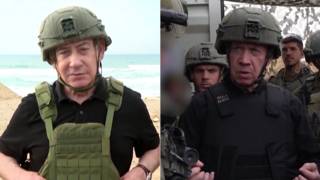
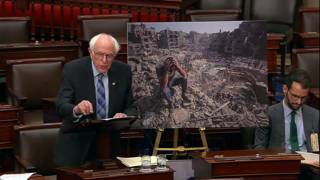
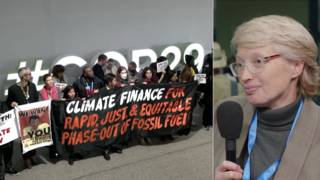
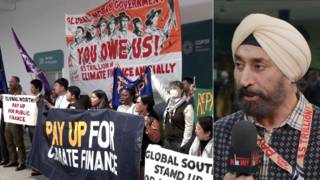





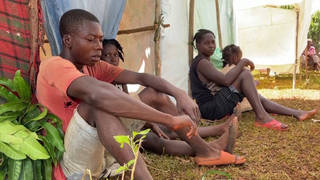
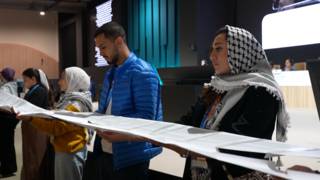
Media Options